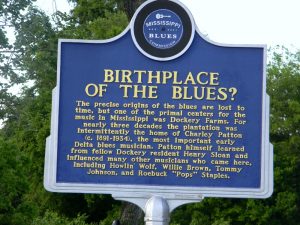America’s greatest scenic drive has introduced generations of travelers to the natural beauty and vibrant culture of the Mississippi region. Everyone who travels this route has their own Great River Road experience and this month, we’re taking time to reflect on some of our favorite things about the byway.
Here are just a few of the things we’re thankful for.
Sweeping vistas
Scenic views of the Mississippi never get old and travelers along the route are treated to some dramatic scenes. All you need to do is pull over and get out your camera. In Trempealeau, Wisconsin, Perrot State Park is located where the Trempealeau River meets the Mississippi River. From the top of 500-foot cliffs you can see for miles. Stunning views can also be found downriver at Pikes Peak State Park in McGregor, Iowa. A drive will take you up to scenic overlook areas at the top of the park’s 500-foot bluffs. You can see a broad expanse of river and numerous small islands. The park is one of the most photographed spots in Iowa.
Unforgettable meals
Food lovers: the Great River Road will lead you to some of America’s great cuisines. There are so many delicious things to savor on the route. In Wisconsin, a state that celebrates all things dairy, cheese curds rule at roadside restaurants. Order them with the local condiment of choice: ranch dressing. In Arkansas, hot tamales, a Latin American staple, has been the go-to meal for generations. It will be perfect fuel for your road trip in this beautiful state. In Louisiana, you can’t beat a beignet, the state doughnut. It’s best enjoyed slowly, between sips of hot chicory coffee. Learn more about these byway staples here.
Historical wonders
All along the route, you’ll encounter impressive historical sites, including many that predate European settlement. In Arkansas, Parkin Archeological State Park was the site of a former American Indian village from A.D. 1000 to 1600. The village visited by explorer Hernando de Soto in 1541. In Illinois, Cahokia Mounds State Historic Site is the remains of the largest and most sophisticated native civilizations north of Mexico. See more historic sites along the routes and other attractions here.
Incredible Interpretive Centers
Along the whole stretch of the Great River Road, you’ll find a network of nearly 100 museums and historic sites that showcase fascinating stories of the Mississippi River. These Interpretive Centers provide information about the river and the people who call the region home and include historical museums, impressive parks and national monuments. Some interpretive centers you’ll encounter on the route include the Charles A. Lindbergh Historic Site in Minnesota, the Delta Blues Museum in Mississippi and the Mark Twain Museum Home & Museum in Missouri. Learn more about the Great River Road’s Interpretive Centers here.







 People often forget how easy it is to traverse the Minneapolis and St. Paul downtown areas by bike. In fact,
People often forget how easy it is to traverse the Minneapolis and St. Paul downtown areas by bike. In fact, 
 Blues history is alive and well along the Great River Road. And while the genre is most prominent in the Deep South, you’ll find blues highlights in other states along the Mississippi as well.
Blues history is alive and well along the Great River Road. And while the genre is most prominent in the Deep South, you’ll find blues highlights in other states along the Mississippi as well.